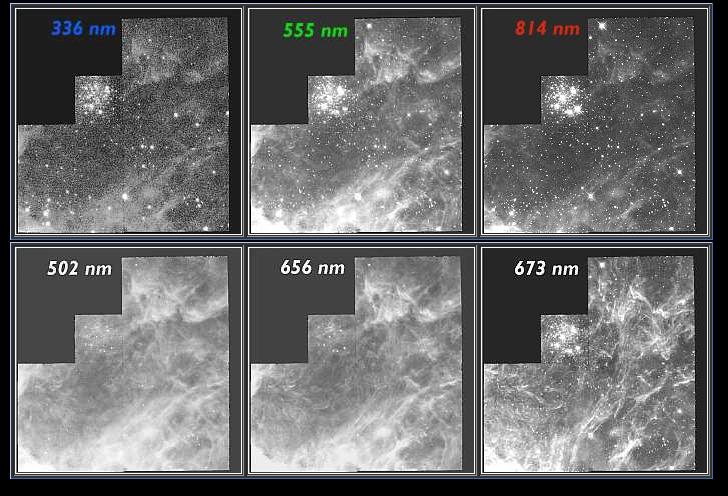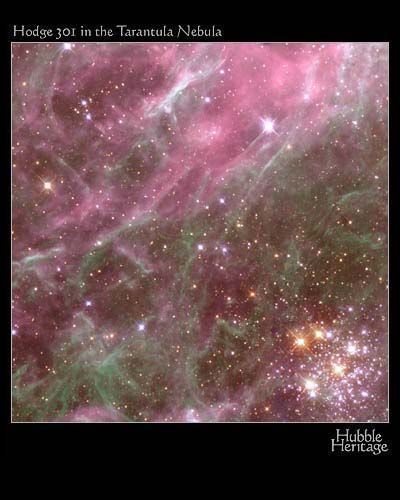Back to Table of Contents
Giving Hodge 301 a 3-D Feel
Here is the 6 datasets for Hodge 301. (The numbers refer to the central wavelength, in nanometers, of the light which was collected by the Hubble Space Telescope's detector.)

So given this set of black and white astronomy data, and knowing that warm colours such as red jump forward, how would one assign colours to impart a 3-dimensional feel to the final image? That is, how do we make the star cluster appear to sit in front of the gas?
Actually we colour the top 3 images blue, green, and red which are close to the colours of the light at the wavelengths selected for those images. This way the star cluster looks natural and fortunately some of the stars are a warm orange colour which will come forward.
Then we need to assign colours to the gas which is imaged more prominently in the bottom 3 images. If we coloured it warm colours the gas would also come forward and the image would have no depth. The gas that is closest to the star cluster is in the 502 nm and 656 nm images so we needed to colour them cooler than the warm star cluster colour. So these 2 images were assigned colours that when combined produced green (which has some cool, blue in it). The Heritage team then selected an orientation and cropping to get the result below.

Click on the image to visit the Hubble Heritage website.
Back to Table of Contents